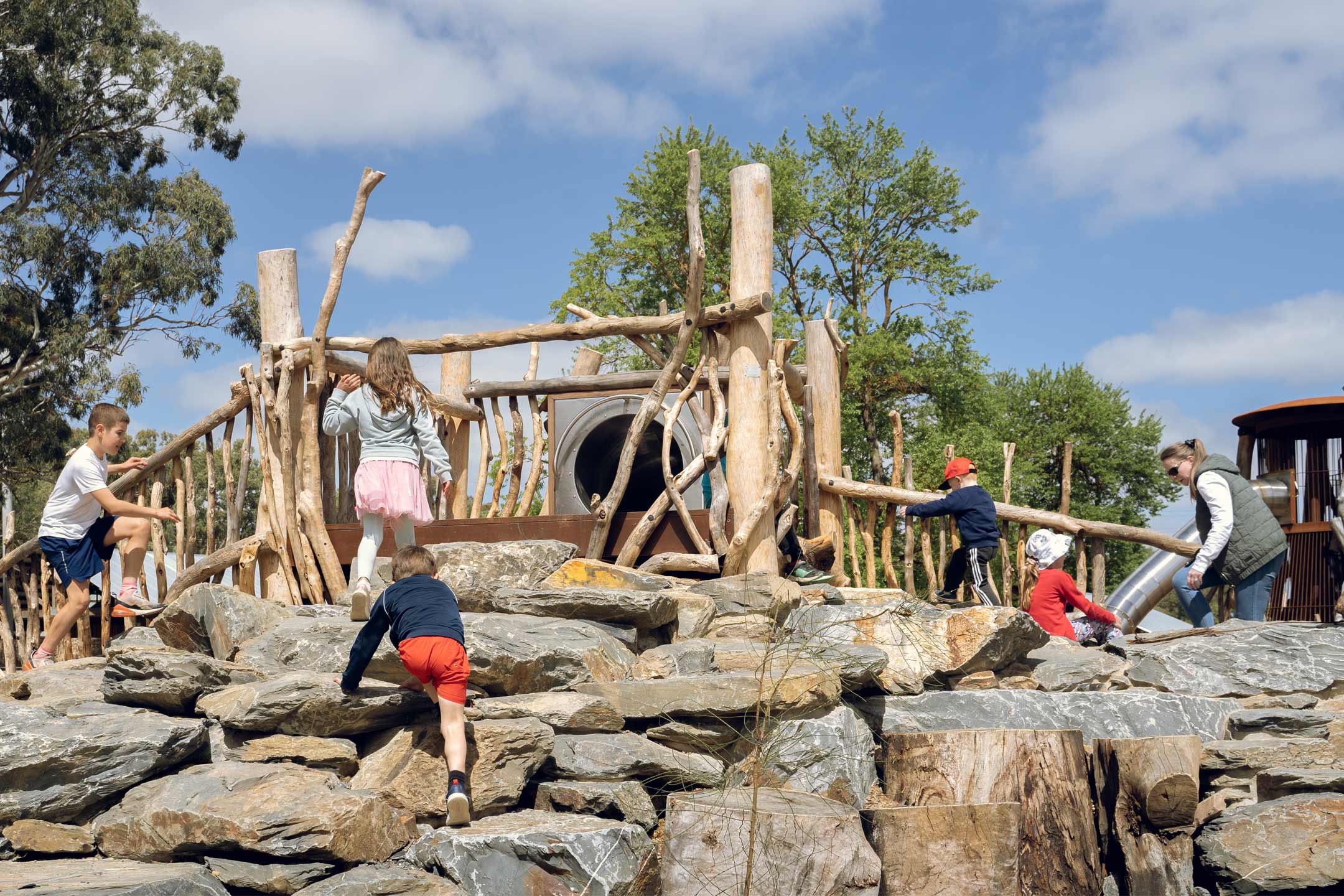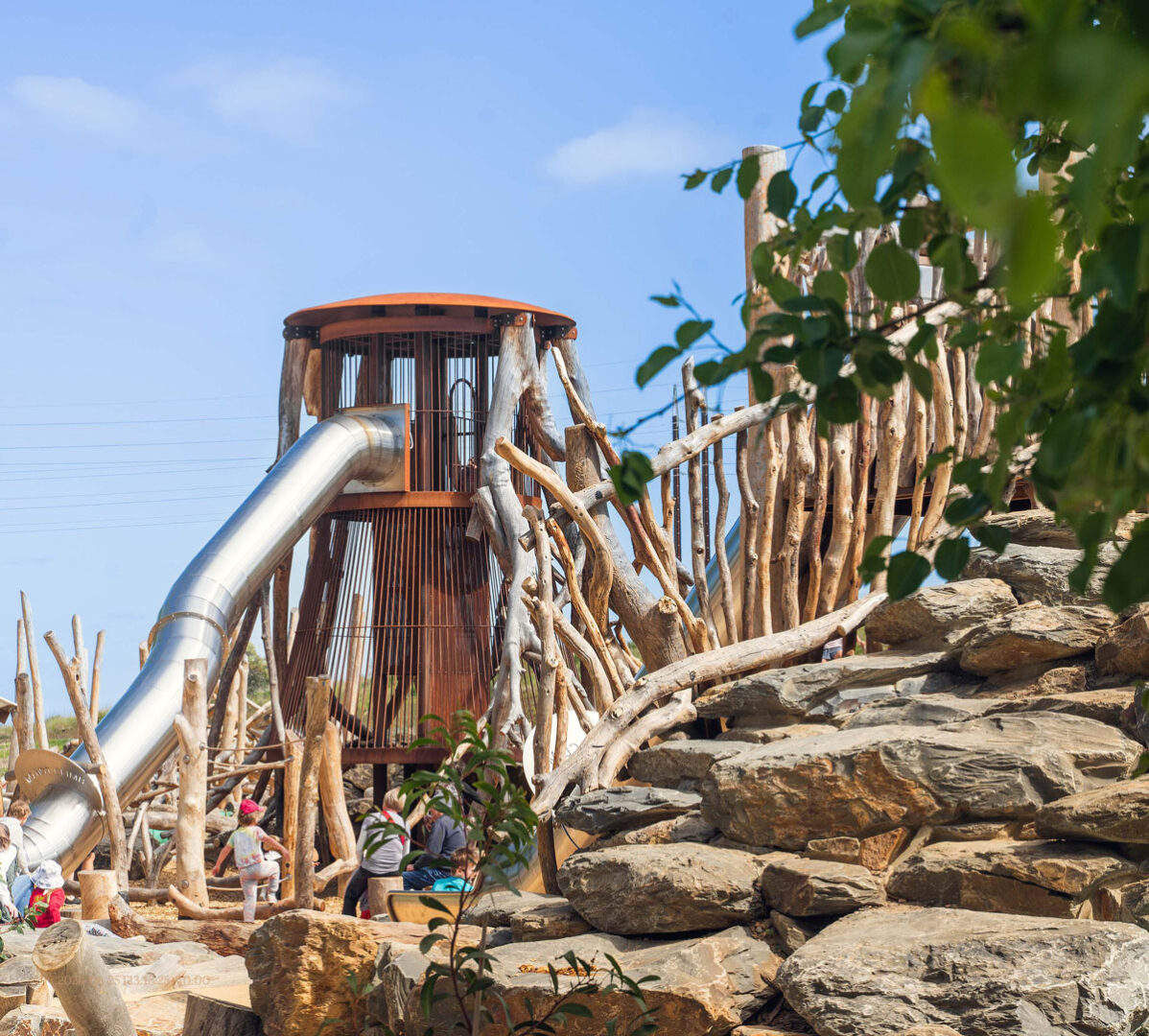
12 Sep Keeping Kids Cool at school in a Warming World
Revolutionising the Future of Playground Design
Playgrounds have always been more than just play areas—they’re crucial for fun, exploration, and building connections between children and nature. Today, they also serve as a much-needed break from screen time. But with climate change raising temperatures globally, it’s becoming harder for kids to enjoy outdoor play comfortably.
Damian Schultz, a landscape architect and father of four, is tackling this challenge with innovative playground designs. Leading the Adelaide studio of national design practice TCL, Damian is committed to making playgrounds more climate-conscious.
“Outdoor playgrounds need to account for the climate,” Damian explains. “Heat mitigation should be a core part of their design.” His approach includes practical solutions like insulated play equipment, shaded areas, integrated water features, and cool-down zones.
Damian’s expertise shines through his recent projects. His team, alongside Karl Winda Telfer and Tikana Telfer, won several awards for their Glenthorne National Park Nature Playspace (all images) in South Australia. Internationally, Damian designed playgrounds for the National Museum of Qatar, where extreme heat and high winds posed unique challenges.

Creating Cooler Play Spaces
To keep playgrounds enjoyable in hot climates, Damian focuses on creating microclimates. One effective method is to design playgrounds in shaded, lower areas. “Shaded valleys are cooler than elevated spots,” Damian says. He also advocates for compact playground designs that reduce the need for extensive shading and cooling elements and suggests configuring large play structures to enhance airflow.
Innovative Cooling Solutions
Damian’s work at the National Museum of Qatar highlights creative cooling techniques that could benefit playgrounds worldwide. In Qatar’s intense heat, Damian’s team developed custom misting fans. These fans, controlled by a weather station, use high-pressure water to cool the air by up to 10 degrees, making playgrounds more comfortable.
High winds were another issue. For the Adventure Ship playground, Damian collaborated with a Sydney-based sail manufacturer to create sails with special incisions. These sails adjust to wind conditions, reducing wind pressure and casting a beautiful, dappled shade on the ground below.

Rethinking Play Equipment
Steel slides are popular for their fun factor but can become dangerously hot in the sun. To solve this, Damian’s team devised a cooling system by channelling chilled water through the slides repurposing water from nearby splash areas. This not only cools the slides but also provides necessary shading and insulation.
No matter where a playground is located, Damian believes in one key principle: “A playground must be playful. It’s all about creating spaces that bring joy and encourage active, imaginative play.”


